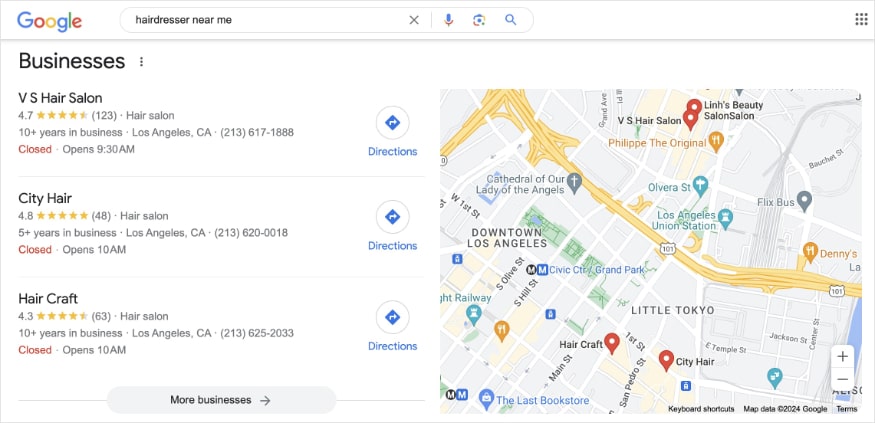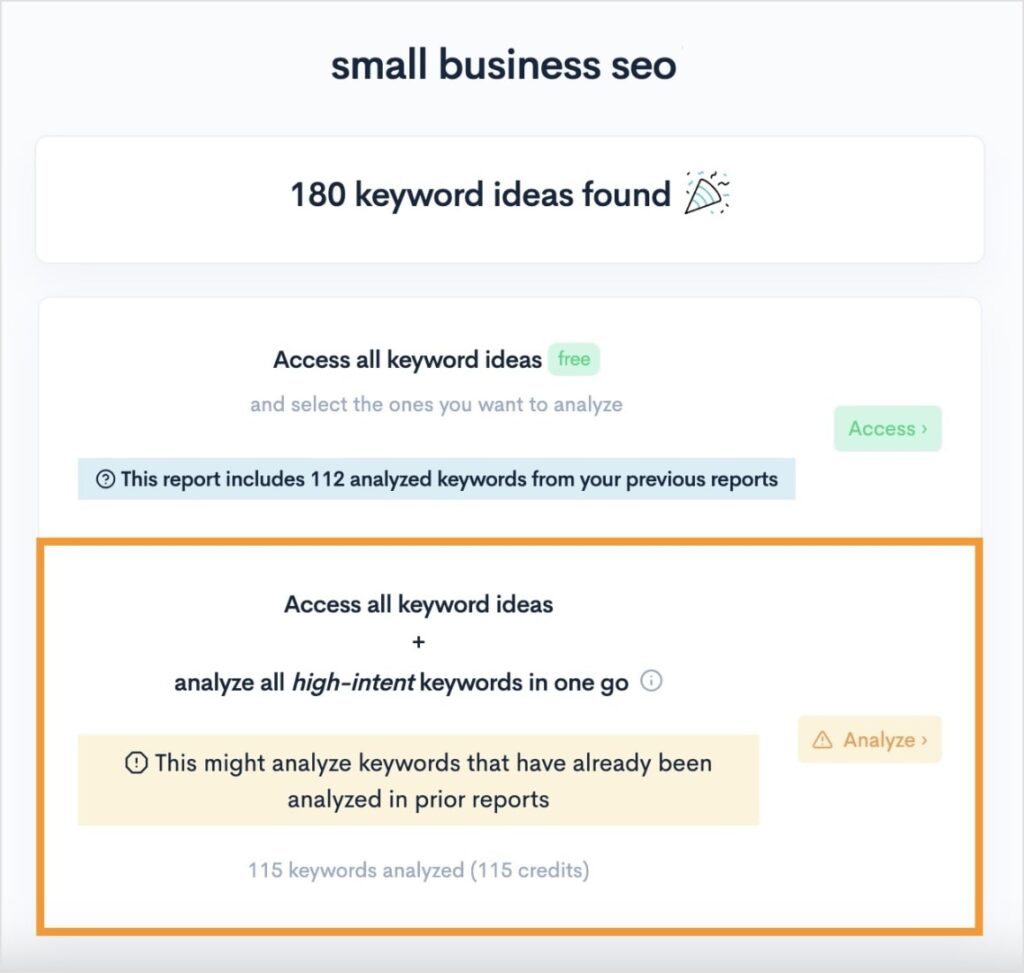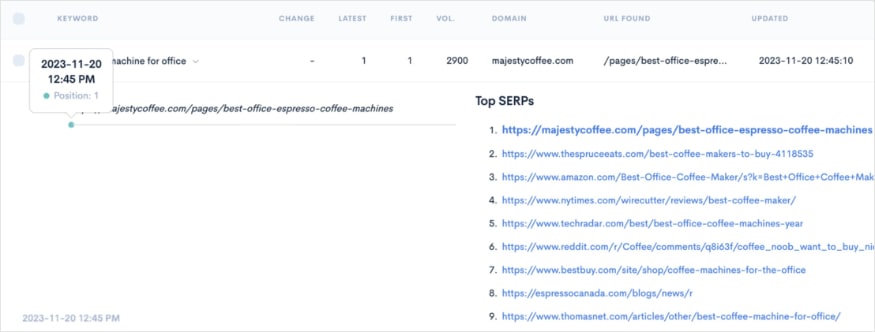10 Common SEO Mistakes Small Businesses Make
Gabriela Jhean
For small businesses, a strong search engine optimization (SEO) strategy is critical for success. It allows you to increase your website’s visibility in search results, ultimately attracting more potential customers through organic search.
Unfortunately, many website owners fall victim to SEO mistakes that are easily preventable.
In this article, we’ll delve into the most common SEO mistakes small businesses make and provide actionable insights on how to avoid them.
Let’s dive in.
Table of Contents
10 Common SEO Mistakes Small Businesses Make
1. Neglecting Keyword Research
One of the most common SEO mistakes small businesses make is underestimating the importance of keyword research.
Keyword research helps you understand what your target audience is searching for online using search engines. By identifying these keywords, you can tailor your content to their needs and improve your chances of ranking higher in search results.
Many small business owners think they can skip this step and take an ad hoc approach to content creation, but this is a serious mistake.
Keyword research is the #1 step to creating a content strategy that resonates with your audience and ranks in search results. It is a foundational element to your website’s online success.
Now, here’s the thing about keyword research: it takes time.
And when you’re running a business, we know this is a resource you’re low on. We get it.
But there are tools that streamline the process of keyword research to make it faster and get you better results.
Take LowFruits, for example.
This low-competition keyword research tool identifies keywords you can actually rank for. And it does it fast.
Here’s a look at some keyword ideas generated for the seed keyword “seo tips.”

And here’s a breakdown of the columns:
- Keyword – The target keyword you could optimize for in your content.
- Vol – Monthly search volume (this search is based in the U.S.)
- SD – The SERP Difficulty Score tells you how easy it is to rank for this keyword. The lower, the better.
- #W3 – The average word count for the top 3 organic results (you can click the refresh button to populate the data.) This will let you know how long your content should be.
- Feat – Tells you which SERP features are ranking for this keyword. For example, featured snippets.
- Weak Spots – These are low-domain authority websites that can easily be beaten on the SERPs. The more weak spots there are, the better your chances of outranking the competition.
- Pos – The position of your website on the SERP. (You will need to add your website to LowFruits to see this information.)
Overall, LowFruits simplifies the time-consuming task of keyword research. You’ll get quick access to low-competition keywords you can rank for and valuable insights for creating a robust content strategy.
2. Overlooking On-Page SEO
Keyword research goes hand-in-hand with on-page SEO.
And if you haven’t done the former, you won’t succeed at the latter.
Keywords guide your on-page SEO efforts. These optimizations include your website’s meta tags, headings, URL, content structure, and body copy.
Failure to optimize these elements can hinder your visibility in search results.
By strategically incorporating relevant keywords into your on-page elements, you can signal to search engines what your web page is about and increase the chances of ranking for relevant search queries.
This ultimately helps you get in front of your target audience.
Tip: Watch out for keyword stuffing. It is possible to over-optimize, so make sure you’re using your keywords strategically—but naturally.
3. Ignoring Internal Link Building
Internal linking helps users and search engines understand how your website is interconnected.
For users, they can easily discover additional, relevant content that may interest them.
For search engines, internal links help them decipher your site hierarchy and structure.
Unfortunately, internal linking is one of the first items busy small business owners overlook. Details matter in SEO, and even though link building can feel tedious, keeping it a core component of your content creation is critical.
Plus, once you make a habit of it, you’ll find it speeds up rather quickly. You’ll identify your main pages, which you frequently link to. This helps build topical authority for your most important pages.
4. Forgetting Image SEO
Images are a great way to break up text and enhance the visual appeal of your content.
However, large, unoptimized images can slow down your website loading times, harming your user experience.
Optimize your images by using the right format, keeping file sizes small, and making them SEO-friendly.
What does SEO-friendly mean for images?
Well, search engines can’t view images like you or me.
Instead, it relies on text signals to understand their content.
This includes items like descriptive alt text, the image filename, captions, etc.
You should include your keywords in these image elements to help search engines understand the context of your visual aids.
This strategy can also help you rank in Google Images, where there are over 1 billion searches every day.
5. Disregarding Local SEO
Local SEO is the practice of optimizing your online presence to attract customers searching for products or services in your area.
It’s an essential practice for businesses with a physical location, yet it’s often disregarded in favor of broader SEO strategies. This can be a costly mistake, as local customers are more likely to convert and typically have higher lifetime values.
Here’s why local SEO shouldn’t be an afterthought in your digital marketing strategy:
- Builds trust and credibility: Local SEO goes beyond just search rankings. Its strength lies in its ability to connect you to potential customers in your area. By nurturing your online visibility, enrolling in online directories, and encouraging customer reviews, you establish your local business as a reliable and trustworthy option.
- Aligns with a mobile-first world: With mobile devices increasingly dominating local searches, having a mobile-friendly website is no longer optional. Local SEO strategies often emphasize a mobile responsive design, ensuring your website offers a seamless user experience for on-the-go searches.
- Generates higher conversion rates: Local searches have higher conversion rates than non-local searches. According to Google Insights, “76% of people who conduct a local search on their smartphone visit a physical place within 24 hours, and 28% of those searches result in a purchase.”
- Unlocks the power of Google Business Profile: A cornerstone of local SEO is claiming and optimizing your Google Business Profile (GBP). GBP is a free tool that allows you to manage your business listing on Google Search and Maps. A well-optimized GBP includes your address, phone number, website, and business hours. Potential customers looking for businesses like yours will find you in local search results, leading them to your doorstep.

Tip: WordPress users, we recommend checking out the local SEO features from All in One SEO. They’re easy to use, don’t require coding, and can boost your visibility on Google Maps. You can learn more here: WordPress local SEO.
6. Failing to Implement Schema Markup
Schema markup is structured data that helps search engines more easily understand your website. It communicates important details like business hours and product descriptions in a way that makes sense to search engines.
This can ultimately help you win higher rankings and earn rich snippets, which are enhanced search listings.
Despite its benefits, many small businesses fail to include schema markup on their websites.
It sounds highly technical, which can scare people off.
But in reality, it’s not that hard to implement.
There are tools that write schema markup for you. Here are two from Google:
And for WordPress users, we recommend:
7. Focusing on Traffic Numbers Alone
Another common SEO mistake small businesses make is to focus on traffic alone.
While attracting a high volume of organic traffic is important, it shouldn’t be the main focus of an SEO strategy.
The primary goal of SEO is to attract the right kind of traffic. These are visitors who are genuinely interested in your product or services and more likely to convert.
Quality over quantity is key when assessing your website traffic metrics.
As for how to get the right customer, small businesses should prioritize creating high-quality content that addresses their target audience’s needs and interests. You can achieve this by leveraging high-intent, profitable keywords.
LowFruits makes it easy to get high-intent keywords.
Simply perform a keyword search for a term you’re interested in. Then, LowFruits will give you the option to analyze all high-intent keywords in one click.

8. Not Tracking Your Ranking Keywords
Another SEO mistake small and large businesses make is creating great content and then forgetting about it.
However, tracking your content’s performance in search engine rankings is crucial.
After all, you don’t want all your efforts to go to waste.
Monitoring the pages that rank and the keywords they rank for will allow you to maximize your reach and keep up the momentum of your SEO rankings.
Typically, tracking your positions can be laborious, but with the LowFruits Rank Tracker, it’s automated and easy.
You can choose which keywords to track and set the fetching frequency to daily, weekly, or monthly.
You’ll get a report that shows your keyword, ranking URL, position history, and a view of your competitors on the SERP.

9. Missing Out on Google Search Console Insights
Small businesses often forget to connect their website to Google Search Console (GSC).
GSC is a free tool with valuable insights about your website’s search performance. It can also help you perform essential tasks, like:
- Submitting your sitemap
- Verifying the indexing of your web pages
- Performing keyword research
- Analyzing key performance indicators (KPIs) like impressions, clicks, and position (see image below)

10. Losing Sight of the Long-Term Strategy
It’s easy to get caught up in the allure of quick wins.
However, SEO is a marathon, not a sprint.
A strategic and sustained approach to SEO will yield more valuable results than short-term fixes.
Focus on high-quality content, optimize for relevant keywords, build authoritative backlinks, and stay true to the course.
Embracing this mindset will lay a solid foundation for enduring success in organic search.
Avoid These SEO Mistakes and Achieve Sustainable Growth
By avoiding the SEO pitfalls we’ve explored and implementing the recommended best practices, you can lay the groundwork for sustainable growth.
Remember:
- Don’t skip keyword research. Keyword research is the foundation of any successful SEO strategy. It helps you understand what your target audience is searching for and allows you to tailor your new content to their needs.
- Focus on quality. High-quality content that resonates with your target audience is essential for attracting qualified traffic.
- SEO is a marathon, not a sprint. Consistent effort and a long-term perspective are crucial for achieving lasting success.
Also, don’t be afraid to leverage digital marketing tools to streamline your SEO efforts. LowFruits can help you with keyword research, keyword clustering, and rank tracking, saving you valuable time and getting you to the top of the SERP.
And if you’re still not convinced, check out this article on the benefits of SEO for small businesses in 2024. Customers and traffic await!